Five Things We Learned from Victor Glover
Discover what it’s really like to live and work in space! Astronaut Victor Glover shares his thoughts and little-known facts about being an astronaut.
:focal(720x571:721x572)/https://tf-cmsv2-smithsonianmag-media.s3.amazonaws.com/blogging/featured/KSC-20200814-PH-SPX01_0005.jpg)
Astronaut Victor Glover has had a busy holiday season.
On Wednesday, December 3, NASA announced 18 astronauts that will part of the Artemis team, working towards a series of missions that will enable human exploration to the Moon and Mars, and Glover made the cut for that historic list. Remarkably, it is only one of many recent accomplishments for the astronaut. Last month, on Sunday, November 15, Glover along with an international crew of astronauts launched on NASA’s SpaceX Crew-1 mission, the first NASA-certified commercial human spacecraft system in history. After a successful trip and arrival to the International Space Station (ISS) the following day, he started another milestone as the first Black astronaut to be on an extended stay mission on the ISS. Somehow, during his first week working in microgravity, studying for the next spacewalk, and juggling his many duties as an astronaut, he allocated some time to chat with the Smithsonian about his journey.
In the Air and Space Live Chat from the ISS with Victor Glover, a collaboration with the Smithsonian’s National Air and Space Museum and the National Museum of African American History and Culture, Glover spoke with students and a global audience about his path to becoming an astronaut and the wonders of living and working in space. While speaking with kids around the country, he took questions on all things space ranging from “Why was Baby Yoda on SpaceX Crew-1?” to “How do you train to be an astronaut?”.
We gathered some of the best moments of this unforgettable interaction with a leader in space exploration. Let’s explore more with a few of the answers he provided.
Underneath a Spacesuit
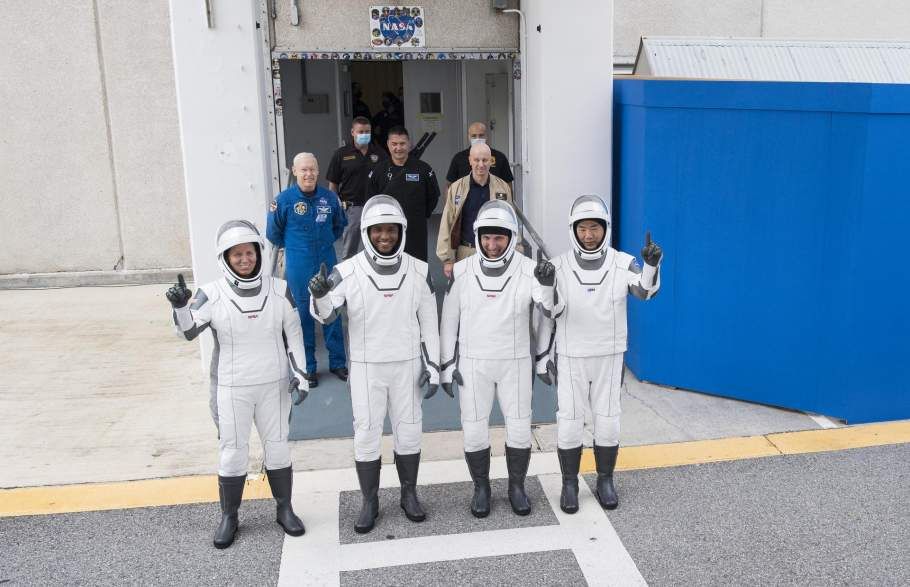
Student Question: What does an astronaut wear underneath a spacesuit?
Spacesuits can be complicated, and they are equipped to handle a range of situations depending on their purpose. A specific type of spacesuit is worn inside a spacecraft while leaving and re-entering Earth’s atmosphere, and typically astronauts wear long undergarments underneath it. Another, and more famous, type of spacesuit is the kind used for Extra-Vehicular Activity, like a spacewalk. This type of spacesuit is called an extravehicular mobility unit (EMU) and it does a lot! Glover taught us that underneath an EMU, astronauts wear the typical long undergarments with the addition of a special cooling garment made of a stretchy spandex material and water tubes.
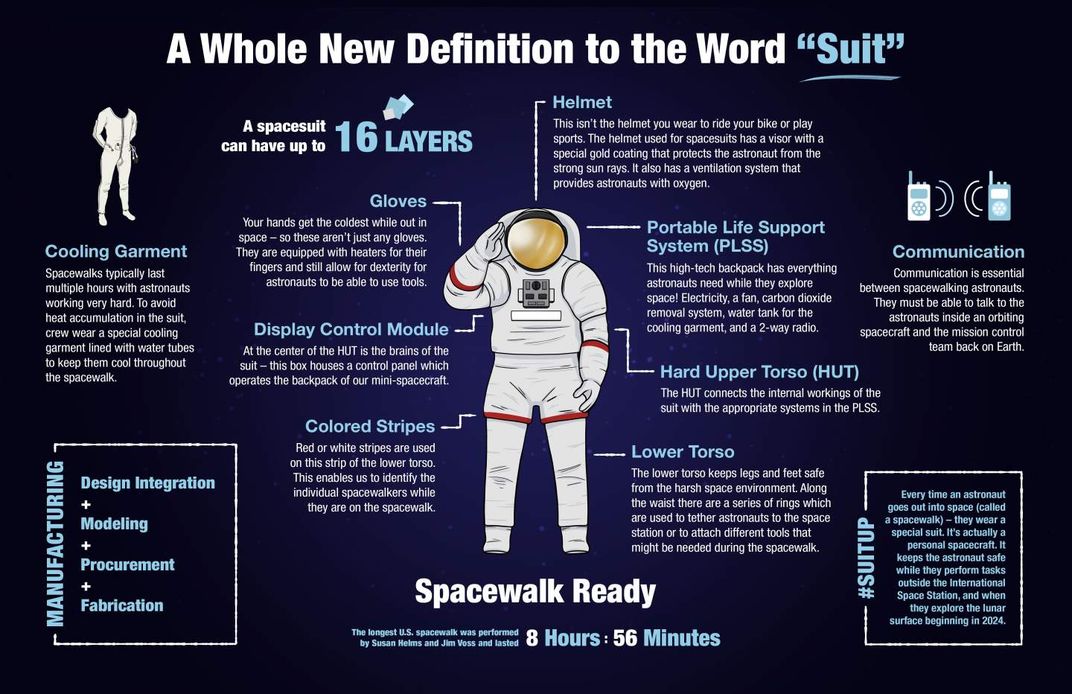
When astronauts exit a spacecraft, like the ISS, and enter space, they need all the protection that a spacecraft provides. Necessities include air, pressure, and radiation protection. EMUs provide these and more! In this way, each one is like a miniature spacecraft.
Training for the Incredible
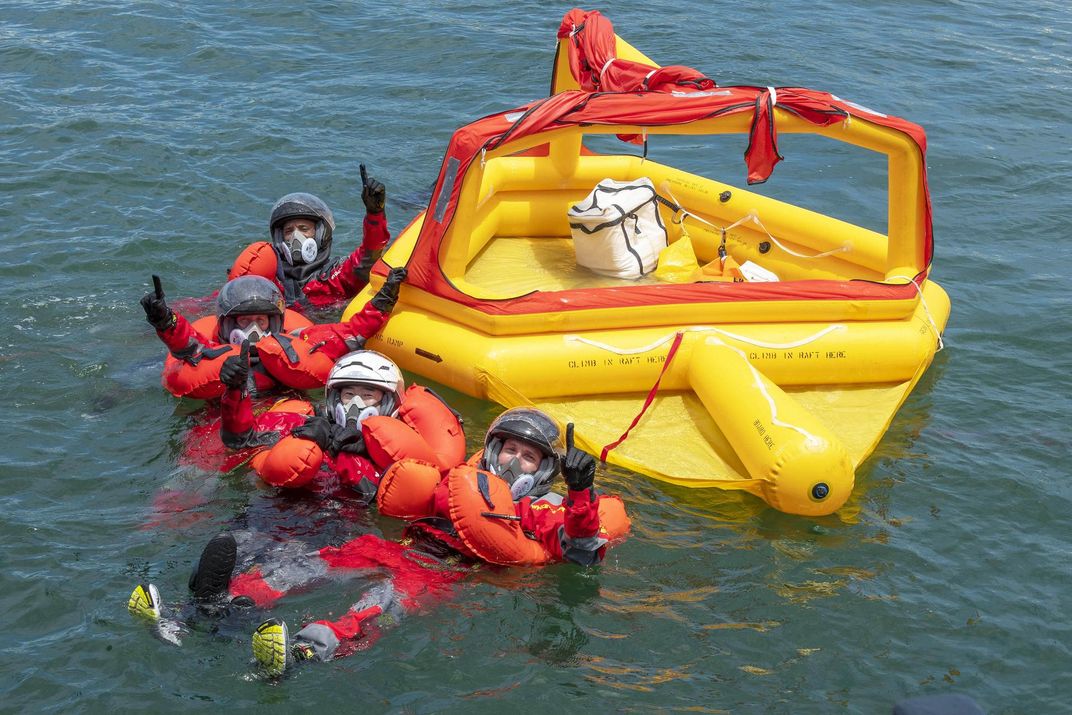
Student Question: How do you train to be an astronaut?
It can take up to two years to become a qualified, space-ready astronaut after selection as a potential candidate. Once selected, candidates begin intensive and varied training that includes a range of activities, from preparing to work in microgravity in the KC-135 to understanding how to be part of a team by flying the NASA T-38 training jets. Glover taught us that for every astronaut, there are a host of teams and individuals that are supporting the training, proving that it takes a village to raise an astronaut!
The ISS normally has six crew members on board (although on Glover’s Expedition 64, there are currently seven astronauts). This means with only a half dozen astronauts, a crew must be able to complete science experiments, perform spacewalks, manage the ISS, provide maintenance to items on the station, attend virtual public affairs events, and more, all on their own! To be successful, everyone must be skilled in multiple areas. This is the reason why astronaut training includes more than lessons on the ISS, survival techniques, and medical procedures. It also emphasizes soft skills, like public speaking and cooperation. Throughout the time astronauts spend together in training, they develop an essential skill for success: teamwork. Glover taught us that it is essential that astronauts work together well and that some of the best training comes from veteran astronauts who lived and worked in space previously.
Baby Yoda on a Mission
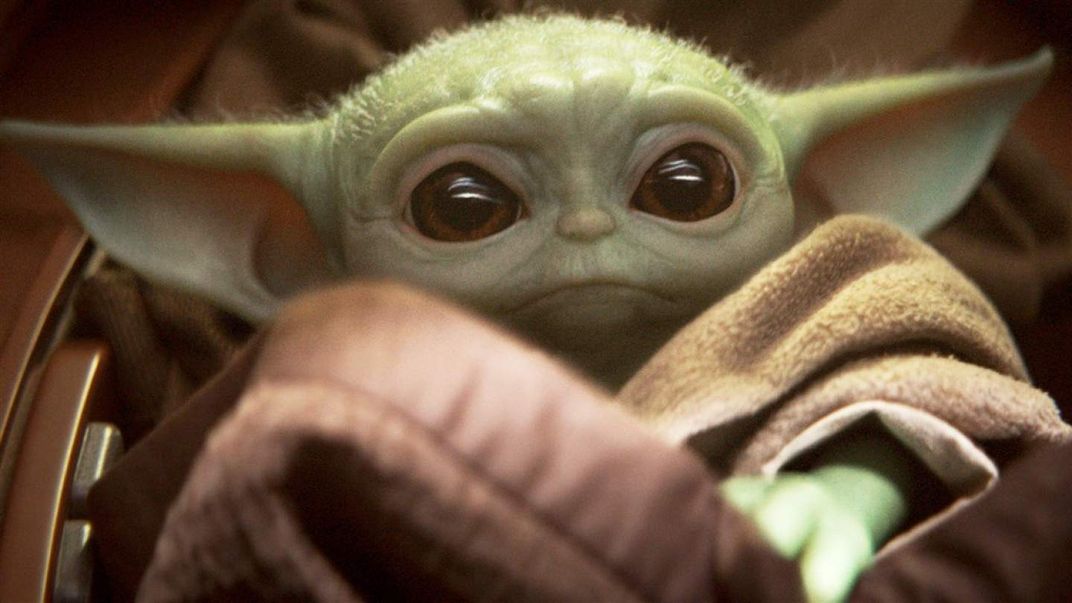
Student Question: Why was Baby Yoda on SpaceX Crew-1?
When astronauts enter microgravity during a launch, they can’t always tell because of the forces they feel while strapped onto their seats as the spacecraft rockets forward. Glover taught us that astronauts and cosmonauts have a long-lasting tradition of bringing an item on each mission to indicate when the spacecraft has reached microgravity (as close to zero gravity as they will get). When the spacecraft enters microgravity, the item will begin to float, letting the crew know that they have reached orbit! SpaceX Crew-1 brought a plush Baby Yoda for this exact purpose. Once it began to float, the crew knew they were in microgravity.
The tradition began with the first human in space, when cosmonaut Yuri Gagarin brought a doll on his Vostok 1 spacecraft. Since then, many entertaining items have been used as zero-gravity indicators. It’s an area where crews can express themselves! For example, Crew Dragon Demo-1, the first orbital test of the Dragon 2 spacecraft, included a plush of planet Earth with a surprised-look expression. Smokey the Bear, Angry Bird, Olaf from Frozen, and many other fun characters have also had the honor!

Astronaut Qualifications
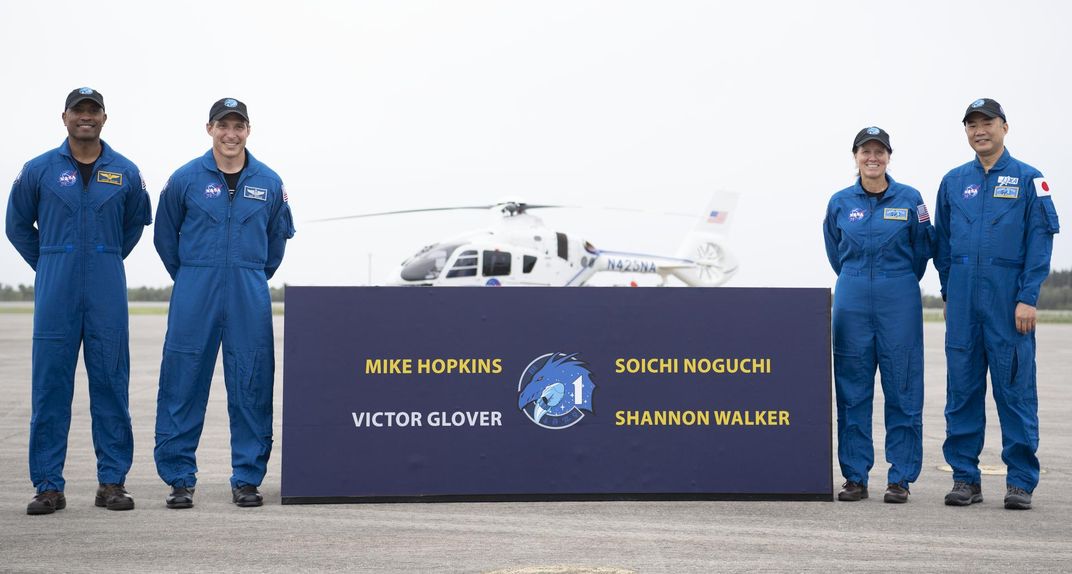
Student Questions: Do you have to be in the military to be an astronaut?
The military selected the first NASA astronauts in 1959, and the astronauts in the Mercury program were military personnel. But Glover taught us that a military background is not required to be an astronaut. He explained that the crew of SpaceX Crew-1 has diverse backgrounds, with two astronauts having a military career and the other two having backgrounds with higher education. To qualify for the astronaut application process, an applicant must meet a list of qualifications, including holding at least a master’s degree in a STEM-related field or similar work experience.
Studying to become an astronaut is never-ending, and Glover said he feels he has been studying for 44 years, as it is the accumulation of lifelong experiences that brought him to this next chapter.
The Human Body in Space
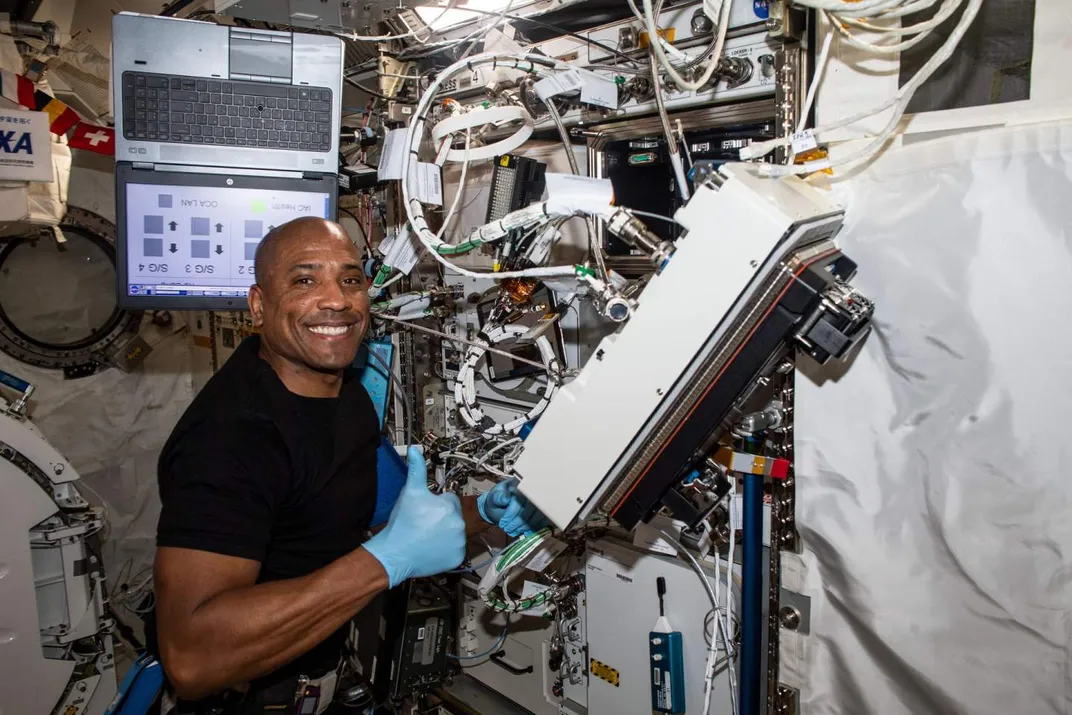
Student Question: Do muscles act differently in space?
Glover taught us that our muscles do the same job in space that they do on Earth, but the movements and outcomes can be wildly different than expected! When we lift a glass of water or push against a wall on Earth, we know what will happen. But in space, the microgravity environment can be disorienting and hinder our capabilities, like hand-eye coordination. Lifting a small object uses less force in space than on Earth, and so, you might lift it too quickly. Pushing against a wall in space will send you floating to the other end of the room!
Living in space changes the body in many ways, and this is largely due to the microgravity environment. But what’s that? Since astronauts on the ISS are orbiting the Earth, they are constantly experiencing a falling sensation which creates the feeling of weightlessness. Without gravity working on the body like it would on Earth, an astronaut loses over one percent of their bone mass a year. If they do not follow a rigorous exercise plan and eat accordingly, they would also lose muscle strength and experience cardiovascular deconditioning. Fluids shift upwards, which can cause vision problems and severe congestion. These are just a handful of the many changes astronauts adapt to while in orbit.

What does this mean for an astronaut returning to Earth? It depends on how long an astronaut has been in space. Glover taught us that he should be able to walk and function normally the same day he returns to Earth. He will experience many changes that should be temporary, since he will be in space for roughly six months. But for missions that are longer, like any future mission to Mars, the changes an astronaut feels will be much more severe and permanent. NASA is studying the problems that will occur on longer missions and how we can address these problems. It’s a huge priority in space exploration.
Glover’s Advice
There is no secret sauce to living and working in space, but Glover has some tips for individuals interested in becoming astronauts. He shared with us three points of advice for finding success in life. First: Be resilient. Don’t let things stop you. Even in hard situations, find some positive, some good, some growth. Second: become a life-long learner. Learning does not stop and start in the classroom! Dedicate time to learning from all life experiences. Third: be a good teammate. Throughout the Air and Space Live Chat, Glover focused on the importance of working with others. He taught us that many solutions and achievements are credited to the team.
“I believe that the same teamwork used by us at NASA to investigate extreme weather patterns and to help unlock the secrets of the universe can be used to solve our most pressing issues here on Earth. If we hope to solve humanity’s most important problems, we must work together. We need each other.”
Whether working with classmates or coworkers, family or friends, astronauts or Mission Control, being part of a team is how we will step into the next chapter of space exploration.
